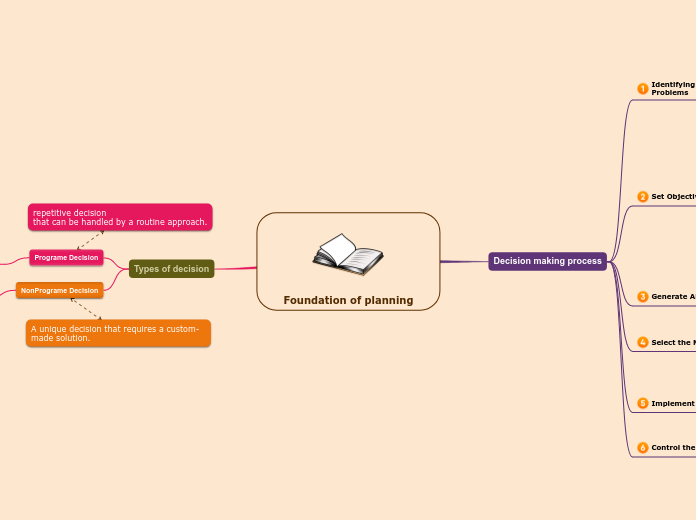realizată de Nur Natasya Badeeozaman 5 ani în urmă
379
Foundation of planning

realizată de Nur Natasya Badeeozaman 5 ani în urmă
379

Mai multe ca acesta
Type in the name of the book you have read.
Type the main events of the book, classifying them in: events from the beginning, events from the middle, and events from the end of the book.
Describe the story visually. Add a representative picture for each of them.
Type the main events from the middle.
Add a representative picture for each of them.
Top Level Management
Type the main events from the beginning.
Add a representative picture for each of them.
Lower Level Manegement
Midle Level Management
The keys to effective implementation are
proper planning and consideration
sensitivity to those who will be affected by the decision
Putting the chosen alternative into action.
Want
Must
quality objectives
defects per million units produced.
productivity objectives
units of output per labor hour,
profit or cost objectives
measured in monetary units,
The main idea is what the book is mostly about.
Some tips to find out the main idea of a book easier: